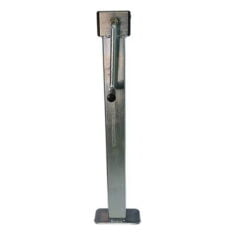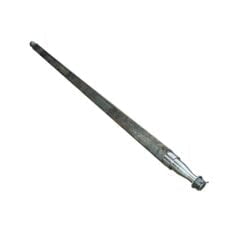
Intro to Wheel Backspace & Offset
Incorrect wheel fitment can lead to a variety of handling issues, tyre wear problems, and potential safety hazards. In our experience, incorrect backspace is the most common issue seen when fitting new wheels on an existing trailer/caravan.
This is the first chapter in the Couplemate™ Technical Hub introduction unit.
Importance of Wheel Backspace & Offset
Wheels and tyres should complement your axle and suspension setup. If they don’t, there is a risk of interference that can lead to problems on the road.
Let’s define two key aspects:
- Wheel Backspace: The distance between the wheel’s mounting surface and the back edge. Correct backspace means that the wheels and tyres safely clear the trailer’s frame, fenders, and similar components.
- Wheel Offset: The distance from the wheel rim’s centreline to the mounting surface. It’s important to note that there are two types of wheel offsets:
- Positive: If the mounting surface is closer to the wheel’s front (outboard) edge, it is a positive offset.
- Negative: If the mounting surface is closer to the wheel’s back (inboard) edge, it is a negative offset.
Understanding each of the above will better help you select the right wheels.
How to Measure Trailer Wheels
You will need a straightedge and a measuring tape.
- Step 1: Remove the wheel and tyre assembly. Ensure your vehicle is on a stable surface and lift it using a jack. Remove the wheel and tire assembly from the vehicle.
- Step 2: Lay the wheel on a flat, even surface with the back (the side that mounts to the hub) facing the sky.
- Step 3: Lay your straight edge across the wheel. Ensure the straightedge is perfectly horizontal and spans the full diameter of the rim.
- Step 4: With the straight edge across the wheel, take a measurement from the rear surface that sits against your hub, to the straight edge. This will be your backspace. We can then use this measurement to calculate the offset.
Calculating the Offset of the Wheel / Tyre
- Step 1: While the Wheel and tyre is face down on the ground, with a straight edge placed over the two, take a measurement of the total height.
- Step 2: Halve the total height. If the backspace measurement matches half of this height, you have a 0 offset Wheel. If there is a difference between the two measurements, it is important to note whether the backspace is larger or less then half the height. This will represent a positive or negative offset wheel.
- Step 3: The difference between the backspace and half of the total height of the wheel, will be the offset value. It can be as little as 5mm or as large as 60mm.
By following these steps, you can accurately measure the backspace of your wheels and tires, ensuring a proper fit and optimal performance for your trailer.
Best Practices for Accurate Measurement
- Measure at multiple points around the hub mounting surface to ensure consistency.
- Double-check your measurement to confirm accuracy.
If you’re still unsure about the appropriate backspace for your trailer or caravan wheels, consider the recommended backspace or offset for your specific trailer’s axle and suspension setup. feel free to give the Couplemate team a call.
Wheel Clearance: Ensure there is enough clearance for brake components, suspension parts, and the inner wheel well (centre bore).
Read the next chapter here: How to Identify Wheel Stud Patterns (PCDs)


0 Comments